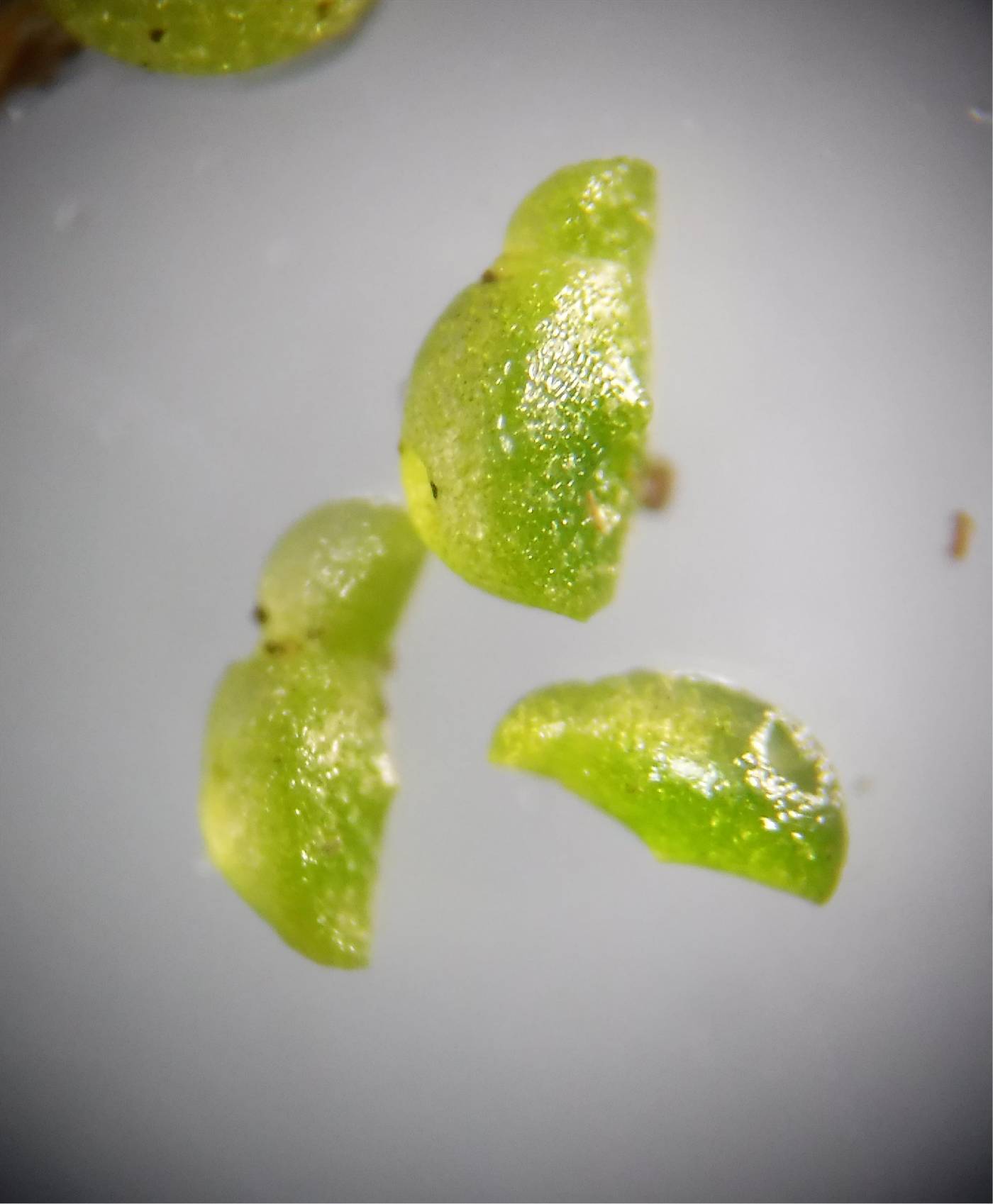Wolffia
|
Family: Araceae |
Roots absent. Fronds floating or submersed (only turions sink to bottom), 1 or 2, coherent, each frond globular, ovoid, or boat-shaped, 3-dimensional, smaller than 1.6 mm, margins entire; air spaces not in tissue; reproductive cavity terminal, at base from which daughter fronds (but no flowers) originate, conic, lower side of cavity with short tract of elongated cells along median line forming connection between node and attachment to mother frond; veins 0; scale at base of frond absent; anthocyanins absent; in some species pigment cells present (visible in dead fronds as brown dots); turions light green, globular, smaller than growing fronds. Flowers 1 per frond, originating in cavity ± on median line of upper frond surface, not surrounded by utricular scale; stamen 1, 2-locular. Seeds 1, nearly smooth. x = 10, 20, 21, 22, 23. Thallus minute, not over ca 1.5 mm, thickened, globose to ellipsoid or ovoid, or flattened on the upper side only, without veins or roots; reproductive pouch solitary, on the upper surface near the basal end, to one side of the midline; reproduction almost entirely by budding, the young plants soon detached; fls (rarely produced) without a spathe, paired, one of each sex, the pistillate one nearer the base, with a single orthotropous ovule; anther unilocular, opening across the top. 8, cosmop. The smallest angiosperm. Gleason, Henry A. & Cronquist, Arthur J. 1991. Manual of vascular plants of northeastern United States and adjacent Canada. lxxv + 910 pp. ©The New York Botanical Garden. All rights reserved. Used by permission. |

